WAPOL: Waste materials for Antimony substitution in flame retared POLymers
Project duration: 1st Jan 2019 – 31st December 2020
Objective The objective of the project is the development of flame retardant (FR) polymers for the automotive sector using no antimony and bromine-based compounds. These materials will fulfill strict automotive fire safety regulation (e.g. UL 94-V0 standard) using limited amounts of phosphorous FRs and will contain secondary raw materials (up to 25%) coming from wastes to reduce environmental impacts and promote a “circular economy” approach to polymer formulations. The final products will cost 10-20% less than the actual commercial counterparts. Background Within the automotive sector, the use of polymer-based materials is increasing fast due to their positive impact on weight reduction (CO2 emission). The emergence of strict regulations and protocols that keep tabs on the safety in end-user industries has given a real push to the global market for plastics with requested fire retardant and self-extinguishing properties. Moreover, the forecast widespread adoption and use of fully electrical vehicles (FEVs) worldwide in the next decades will further expand the need for FR plastics. The joint use of antimony- and bromine-based compounds is known to be a very effective flame retardant (FR) system in plastics; however, antimony shows several stringent supply and toxicity risks. Moreover, several directives of the European Union (such as RoHS and WEEE) aim at reducing the use of potentially harmful substances, such as bromine compounds, in manufactured goods. For less strict fire regulations, the solution available on the market for substituting antimony-bromine system is represented by the use of phosphorus-based FRs, which are obtained starting from phosphate rock. Nonetheless, also the phosphate rock has been recognized as a critical raw material (CRM). Therefore, the market is looking for alternative solutions to replace antimony-bromine FR and reducing the use of phosphorous based alternative FRs, but still effective in meeting required fire performances. The solution (technology) The WAPOL project will develop flame retardant (FR) polymers for the automotive sector using no antimony- and bromine-based compounds and low amount of phosphorus-based FR. Fly and/or bottom ashes, such as wastes deriving from processes like incineration of municipal solid waste will be used, after suitable treatment, as main substituents for critical and/or toxic raw materials. Other wastes from metallurgical industries (for example microsilica) will be used too since they are involved in ashes treatments, alongside commercial sulphur- and nitrogen-based compounds. The FR polymers developed will fulfil strict regulations on fire reaction in the automotive sector. The project will also have an impact on extracting value out of the residue stocks since it will allow using waste materials (from MSWI and metallurgical industry) to obtain secondary raw materials to be used in high-added value market such FR polymers. Moreover, it will contribute to developing Materials for a sustainable European mobility Industry since in the electric mobility it is expected that the use of FR polymers will increase steadily due to their combination of lightness, fire safety and temperature resistance. The FR polymers developed will be fully recyclable. Partnership- Università degli studi di Padova, Italy
- UniSMART Padova Enterprise, Italy
- RI.SE Research Institutes of Sweden Holding AB, Sweden
- Centro Ricerche Fiat, Italy
- IRIS Ambiente, Italy
- Velaworks, Slovakia


